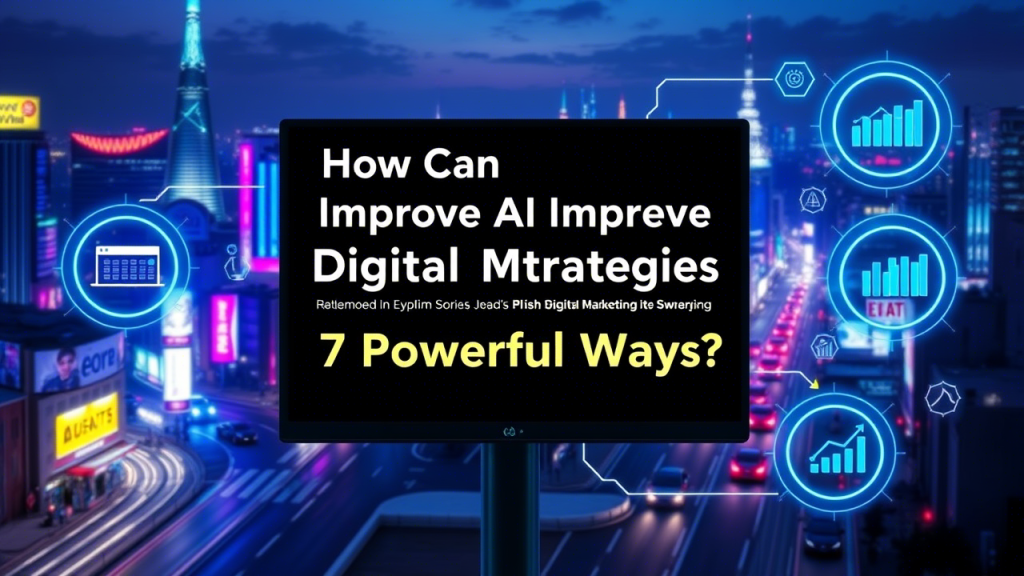In today’s fast‐paced marketplace, excellent customer service isn’t just a nice-to-have—it’s the secret weapon that drives customer satisfaction, loyalty, and ultimately, business success. With businesses of all sizes seeking to stand out, modern customer service solutions are evolving at a rapid clip. In this article, we’ll explore seven powerful strategies for transforming your customer service operations using innovative customer service solutions. Drawing on insights from industry experts and real-life examples, we’ll guide you through the challenges, cutting-edge approaches, and actionable tips that will help you deliver an unforgettable customer experience.
One of the most exciting developments in this space is the integration of artificial intelligence (AI) applications into customer service systems. AI is now being applied to streamline operations, reduce response times, and even train human agents—blurring the line between technology and the personal touch that customers value. Let’s dive in.
1. The Modern Challenge: Rising Customer Expectations and Fragmented Communication
In the era of instant gratification, customers expect rapid responses across multiple channels—from phone and email to social media and live chat. Traditional call centers and outdated customer service practices simply can’t keep up. The challenge is twofold: first, to manage high volumes of inquiries efficiently; and second, to deliver a consistent, personalized experience regardless of the channel.
Consider this: according to recent reports, over 80% of customers expect their issues to be resolved on the first contact, yet many businesses still struggle to meet this expectation [ringcentral.com]
. Customers often encounter long wait times and disjointed support processes when different platforms fail to communicate with one another. Such fragmentation can harm brand reputation and reduce customer retention.
Moreover, as companies expand their digital presence, the volume of unstructured data—emails, chat transcripts, and social media interactions—grows exponentially. Without the right tools, valuable insights remain locked away, making it difficult to understand customer needs and tailor service responses effectively.
To address these challenges, modern customer service solutions must integrate multiple channels into a unified system. This enables agents to access a complete view of each customer’s history and preferences, ensuring more informed, efficient, and empathetic interactions.
2. Cutting-Edge Approach: Leveraging AI Applications for Superior Service
A major breakthrough in customer support comes from incorporating AI applications into your customer service solutions. Companies are now deploying AI-powered chatbots and virtual assistants to handle routine inquiries, freeing up human agents to focus on complex issues that require empathy and nuanced judgment.
For instance, innovative platforms like Zendesk and RingCentral now integrate AI to generate dynamic responses based on real-time data [zendesk.com]
These tools analyze customer queries as soon as they are received, offering immediate solutions or routing the inquiry to the appropriate agent if it exceeds the AI’s capabilities. In some cases, AI is even used to train human agents by analyzing interactions and suggesting improvements—a process that helps organizations fine-tune their customer service protocols [theaustralian.com.au].
A real-life example comes from Telstra, which has developed in-house AI tools like AskTelstra and One Sentence Summary to streamline customer responses. By consolidating knowledge into a single, easily accessible platform, these tools not only reduce response times but also enhance consistency in service quality [theaustralian.com.au].
This integration of AI applications is a prime example of how customer service solutions can be enhanced through technology while still preserving the human element when it matters most.
The transformation powered by AI is not just about automation; it’s about using technology to elevate the overall customer experience. When AI handles routine tasks, human agents have more time to engage in personalized interactions that build trust and loyalty—a balance that is crucial in today’s competitive environment.
3. Real-Life Examples: How Top Companies Are Innovating
Many leading companies have embraced customer service solutions that integrate both AI and human expertise. Let’s take a closer look at a few examples:
Telstra’s Integrated AI Tools
Telstra has rolled out AI solutions that have revolutionized its customer service operations. By replacing thousands of outdated knowledge articles with a single, clear answer provided by AskTelstra, Telstra ensures that customer queries are resolved quickly and accurately. Their One Sentence Summary tool further simplifies interactions by offering concise summaries to frontline staff, reducing the need for customers to repeat information [theaustralian.com.au].
Klarna’s AI Assistant
Swedish fintech company Klarna is another notable example. Its AI assistant reportedly performs work equivalent to 700 full-time agents, handling everything from payment queries to product returns with remarkable efficiency. The system’s ability to learn and improve over time translates into a service experience that rivals human agents in speed and accuracy [businessinsider.com].
BACA Systems’ Knowledge Base Overhaul
In the manufacturing space, BACA Systems faced the challenge of supporting highly customized industrial robots. Their solution was to break down 400-page manuals into digestible, searchable articles. This structured knowledge base feeds into their AI-powered chatbot, enabling faster and more accurate responses to customer inquiries [wsj.com].
These examples highlight the versatility of modern customer service solutions. They show that whether you’re in telecommunications, fintech, or manufacturing, the integration of AI applications can significantly enhance efficiency and customer satisfaction.
4. Actionable Tips: How to Implement Customer Service Solutions That Work
If you’re ready to transform your customer service operations, here are some actionable tips to guide you along the way:
a. Integrate All Communication Channels
Start by consolidating all customer interactions into a single platform. Choose a customer service solution that offers seamless integration with email, live chat, social media, and phone systems. This ensures that every interaction is captured in one unified view, making it easier for your team to deliver consistent and personalized support [ringcentral.com].
b. Leverage AI to Automate Routine Tasks
Deploy AI-powered chatbots and virtual assistants to handle frequently asked questions and routine requests. Not only does this reduce the workload on human agents, but it also ensures that customers receive immediate responses 24/7. Remember to continuously monitor and update the AI’s knowledge base to maintain accuracy and relevance [arxiv.org].
c. Train Your Team Using AI Insights
Modern customer service solutions are capable of analyzing interactions and providing valuable feedback. Use these insights to train your human agents. For example, tools that analyze call transcripts can identify best practices for empathy and effective problem-solving, which you can then incorporate into your training programs [theaustralian.com.au].
d. Customize Your Knowledge Base
A robust knowledge base is critical. Break down extensive manuals into smaller, context-specific articles that your AI system can easily access and reference. This makes it easier for both AI and human agents to retrieve relevant information quickly [wsj.com].
e. Monitor Customer Feedback and Adjust
Implement regular feedback loops, such as customer surveys and Net Promoter Score (NPS) measurements, to gauge customer satisfaction. Use this feedback to continuously improve your customer service processes. Even with advanced AI, the human touch remains vital for handling complex or emotionally charged issues [en.wikipedia.org].
f. Invest in Tools That Enhance Agent Well-Being
High-quality customer service depends on happy and well-supported employees. Consider solutions that include features for agent wellness, such as automated break scheduling and workload management tools. When agents feel valued and supported, they’re better equipped to deliver exceptional service [lifewire.com].
g. Focus on Continuous Improvement
Customer service is an ongoing journey. Regularly review your processes, update your AI systems, and invest in training programs. Continuous improvement will help you stay ahead of changing customer expectations and technological advancements.
5. The Human Factor: Balancing Technology with Empathy
While technology is playing an increasingly central role in customer service solutions, the human element remains indispensable. Studies have shown that AI can handle up to 80% of routine inquiries; however, when it comes to delivering empathy and understanding during high-stress situations, human agents still excel [theaustralian.com.au].
The most successful customer service operations strike a delicate balance between automation and personal interaction. AI applications are incredibly effective at processing large volumes of data and providing immediate responses, but customers still appreciate a human touch when dealing with complex issues or emotional situations.
For example, when a customer contacts support with a problem that’s causing significant distress, a human agent can listen, empathize, and tailor a solution that feels personal and caring. This combination of advanced technology with genuine human empathy is what ultimately builds lasting customer loyalty.
6. Embracing Change: Preparing Your Business for the Future
The landscape of customer service is evolving rapidly. With AI and other digital tools becoming integral to service delivery, businesses must be proactive in preparing for these changes. Here are some key considerations:
a. Build a Robust Data Infrastructure
The success of AI applications in customer service hinges on the quality of the data they are fed. Invest in building a robust data infrastructure that organizes and updates your customer information continuously. This not only improves the performance of AI tools but also ensures that insights are actionable and relevant [wsj.com].
b. Cultivate a Culture of Innovation
Encourage your team to embrace new technologies and continuously seek improvements in service delivery. A culture that values innovation will help your business adapt quickly to changes and take full advantage of modern customer service solutions.
c. Collaborate with Technology Partners
Partnering with technology providers who specialize in AI and customer service solutions can accelerate your transformation journey. These partners can provide valuable expertise, help you navigate challenges, and ensure that your systems are state-of-the-art.
d. Focus on Employee Training and Development
As AI becomes more prevalent, new roles in data organization and system maintenance will emerge. Invest in training programs that help your employees adapt to these changes. A well-trained workforce will be better positioned to leverage AI effectively and provide outstanding customer service.
e. Stay Agile and Adaptable
Finally, remain agile. Technology and customer expectations will continue to evolve. Regularly reassess your customer service strategy and be prepared to adjust your processes, tools, and training programs to meet new challenges head-on.
7. Conclusion: A Holistic Approach to Customer Service Solutions
In today’s digital era, exceptional customer service solutions are vital for business success. By integrating modern AI applications with a robust, unified platform, companies can handle high volumes of inquiries efficiently while still providing personalized, empathetic support when it matters most. The strategies outlined in this article—from channel integration and AI automation to ongoing training and employee wellness—offer a roadmap for transforming your customer service operations.
Remember, while technology such as AI is a game-changer, the ultimate goal is to create a seamless, positive experience for your customers. By balancing automation with a human touch and continuously adapting to new technologies and customer expectations, you’ll not only improve efficiency but also foster loyalty and long-term growth.
Embrace these customer service solutions as a strategic investment in your business’s future. Whether you’re a small startup or a large enterprise, the right blend of technology and human insight will set you apart from the competition.
Start today by evaluating your current customer service processes. Identify areas where you can integrate AI-powered solutions and streamline communication across channels. Don’t wait for customer dissatisfaction to drive change—be proactive. Invest in technology, train your team, and build a unified system that delivers exceptional experiences every time. Share your thoughts in the comments below and let us know how you plan to transform your customer service operations!

